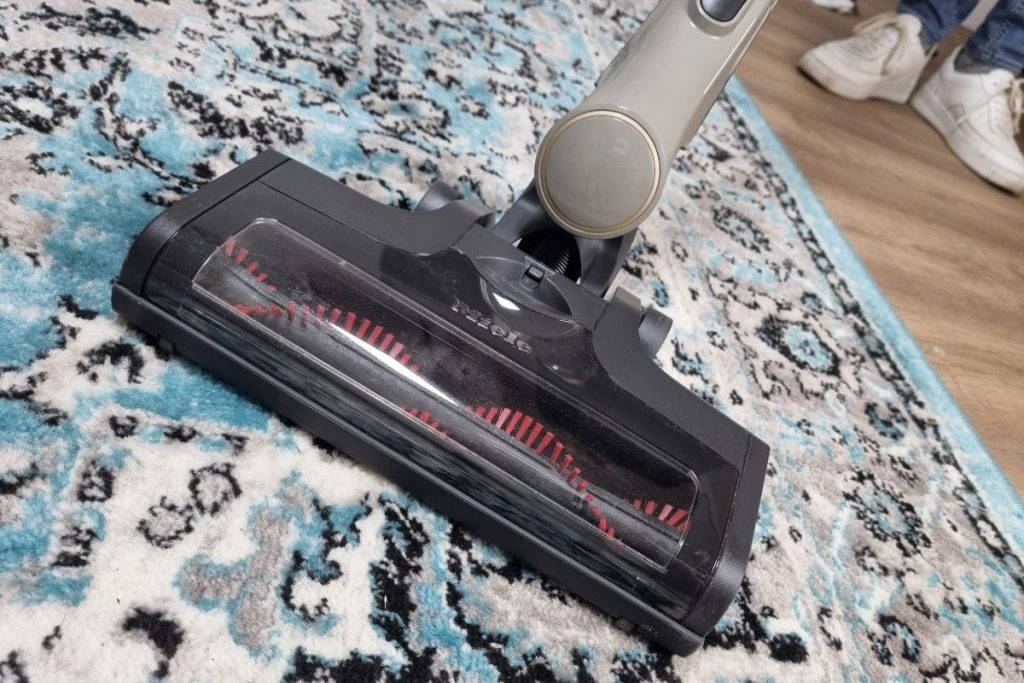10 Best Wool Carpet In 2024
Bob Vila Apr 19, 2024 8:12 AM
We independently study, test, and review 10 Best Wool Carpet products before making recommendations. We’re testing the Safavieh, Calore, nuLOOM for a for a future update to this guide.

Overview
For centuries, wool carpets have been known for their quality and longevity. They are a popular choice for homeowners, as well as those in the construction and hospitality industries, because they are synonymous with luxury.
Fibers like wool can bear strain, look lovely, and retain their look over time. When properly cared for, it can last for decades, making it a great choice for replacing worn-out carpets. Wool is an excellent choice if you're looking for a new carpet.
Let's take a closer look at what sorts of wool carpet are available and the benefits and drawbacks of this adaptable flooring option before making a final decision.
- SCORE7.6
- BrandnuLOOM
- Prime
Last update on 2024-04-19 / Affiliate links / Images, Product Titles, and Product Highlights from Amazon Product Advertising API
Types of Wool Carpet
Both 100% wool carpets and 80/20 wool carpets are the most common kind of wool carpets. As a result, both blends can be made in broadloom or carpet tile format, giving designers and end users a choice of installation methods.
100% Wool Carpet / Natural Wool Carpet
Hundreds, if not thousands of years ago, humanity learned how to shear the lovely, fluffy wool from sheep herds and used it to produce floor coverings. There are many types of 100 percent Wool Carpet, which are also known as natural wool carpet or 100 percent wool carpet.
'String' wool is the greatest type of wool for making 100% wool carpets. Wool of this sort can be found in Britain and New Zealand on sheep breeds, and many carpets have both British and New Zealand wool.
Bulky, strong British wool has its own distinct feel, but New Zealand wool is much softer and whiter, making it a great choice for lighter color palettes. Many people mistakenly believe that New Zealand Merino wool is of higher quality, but in reality, a variety of sheep breeds from throughout the world can produce wool of comparable quality, if not superior in some way.
It isn't just sheep wool that is used to make natural wool carpets; llamas, alpacas, and even camels' fur can also be used.
80/20 Wool Carpet / Wool Mix Carpet
No other fiber is required to increase the performance of a wool carpet, which has an inherent strength of its own; nonetheless, man-made fibers are frequently incorporated into the mix for a variety of reasons. Wool mix carpets and wool blend carpets are other names for 80/20 wool carpets.
Because synthetic fibers can be used for a variety of purposes, manufacturers may use them in their yarns for a variety of reasons.
With the addition of synthetic fibers, 80/20 wool carpets have become increasingly popular. A wise investment for any home or business owner is a more lasting carpet with the same aesthetic and practical features as 100 percent wool.
Wall to Wall Wool Carpet
Wool Rugs' warmth and softness aren't their only advantages; if you're worried about stains or fading, you might be put off by them. Wool is inherently water and dirt resistant, making cleaning a breeze. Hard natural fiber carpets don't trap dirt, but rather allow it to float on the surface. You no longer have to worry about people bringing dirt into your home and spoiling your new carpet or rug, because all it takes is a fast vacuum to clean up.
Due to its intrinsic resilience, wool carpet and rug fibers can persist for decades. It's a no-brainer: if wool can keep sheep dry and comfortable in the rain, it can do the same for your home.
Advantages of Wool Carpet
The first carpets were made of wool around 3000 B.C. *** This is a fact that hasn't altered since that time, even though carpet-making techniques and even the definition of the word itself have evolved. Wool is a natural fiber product that comes from the fleece of sheep and lambs. Wool carpeting has a number of advantages.
Durability
Wool carpets are long-lasting because they are made of a naturally tough material. Wool carpets have been known to persist for decades if properly cared for in a household. Wool can resist heavy foot traffic while still preserving its natural beauty if you have a high-traffic area in your home. Its resistance to crushing is one of its most appealing properties.
Comfort
The natural properties of wool will give owners of wool carpet a soft, comfortable environment to walk, stand, relax, and play no matter how the carpet is created. Cut pile and loop structure creates a soft stable area for years of relaxation and enjoyment. In the winter, wool retains heat while preventing the floor from being overheated, while in the summer, it acts as a barrier to keep heat out of the room. When it comes to reducing humidity, wool absorbs moisture from the air, which is then released back into the air when it's dry.
Eco-friendly
An further benefit of wool is its ability to keep pests and bacteria at bay. Wool, on the other hand, decomposes quickly in the soil and returns the nutrients that made it possible for it to grow in the first place, unlike synthetic materials.
Naturally soil resistant
The scales of the wool's structure are placed in an order similar to that of shingles on a roof. Scales on the fibers prevent dirt from clinging to them and aid in removing it. Soil release from wool is superior to that of any other fiber.
Naturally crush-resistant
Unlike any other fiber, wool is naturally curled and more resistant to crushing than any other. In comparison to other carpet fibers, wool carpet fibers rebound more quickly following crushing.
Insulator
Wool carpet's inherent cooling and heating characteristics make it ideal for both summer and winter use.
Thing to consider
Durability
Lanolin, a naturally occurring waxy oil found in sheep's wool, enhances the fibers' strength and resistance to dust and filth.
Wool's intrinsic elasticity makes it resistant to crushing, making it a great choice for garments. Wool's naturally coiled structure offers a high degree of elasticity and tenacity. Artificial fibers, such as nylon and polyester, can lose their ability to absorb moisture with time.
As a result, a wool carpet will last longer than one made of synthetic fibers. This is why wool carpets may last for so long with proper care if they are properly cleaned and cared for.
Sustainability
An added benefit of wool carpeting is that it is a sustainable flooring material. Wool is a renewable, sustainable, and biodegradable fiber that comes from sheep.
Wool carpeting is also made using less energy than synthetic carpeting fibers like nylon or polypropylene, making it a more environmentally friendly option.
As a good insulator and a source of savings on your utility bills, wool carpeting helps you save money while also benefiting the environment.
Cost
The initial cost of a wool carpet is a drawback, however. Prices for wool carpets vary depending on where the fibers come from and how they are made (tufted, wilton, woven, etc).
Because it is the purest wool on the planet, New Zealand wool is an excellent example of premium wool. The sheep in this advertising show how it may be dyed a wide variety of colors.
Poorly bred sheep's wool is usually yellow rather than white, and it can only be colored dark colors because of the limited dyeing options. One of the best examples of premium wool carpets is Wools of New Zealand. In our showroom, you'll see their logo on a slew of our samples.
There are some characteristics of wool that set it apart from other types of carpet fibers. Everything about it is natural: it's pleasant, fire-resistant, long-lasting, and even environmentally friendly.
Wool carpet is more expensive and requires more maintenance than other carpets made entirely of synthetic materials, but the benefits significantly outweigh the drawbacks.
Wool carpets, when specified, installed, and maintained appropriately, should always meet or even surpass expectations, regardless of whether they are for a family home, a luxury lodging, or another high-end commercial requirements.

























